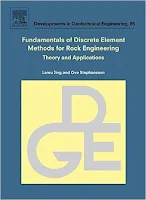Open Channel Flow: Numerical Methods and Computer Applications
Roland Jeppson ...
1258 pages - Publisher: CRC Press; (November 9, 2010)
Language: English - ISBN-10: 1439839751 - ISBN-13: 978-1439839751
1258 pages - Publisher: CRC Press; (November 9, 2010)
Language: English - ISBN-10: 1439839751 - ISBN-13: 978-1439839751
A comprehensive treatment of open channel flow, Open Channel Flow: Numerical Methods and Computer Applications
starts with basic principles and gradually advances to complete
problems involving systems of channels with branches, controls, and
outflows/ inflows that require the simultaneous solutions of systems of
nonlinear algebraic equations coupled with differential equations. The
book includes a CD that contains a program that solves all types of
simple open channel flow problems, the source programs described in the
text, the executable elements of these programs, the TK-Solver and
MathCad programs, and the equivalent MATLAB® scripts and functions.
The book provides applied numerical methods in an appendix and also incorporates them as an integral component of the methodology in setting up and solving the governing equations. Packed with examples, the book includes problems at the end of each chapter that give readers experience in applying the principles and often expand upon the methodologies use in the text. The author uses Fortran as the software to supply the computer instruction but covers math software packages such as MathCad, TK-Solver, MATLAB, and spreadsheets so that readers can use the instruments with which they are the most familiar. He emphasizes the basic principles of conservation of mass, energy, and momentum, helping readers achieve true mastery of this important subject, rather than just learn routine techniques.
With the enhanced understanding of the fundamental principles of fluid mechanics provided by this book, readers can then apply these principles to the solution of complex real-world problems. The book supplies the knowledge tools necessary to analyze and design economical and properly performing conveyance systems. Thus not only is the book useful for graduate students, but it also provides professional engineers the expertise and knowledge to design well performing and economical channel systems.
The book provides applied numerical methods in an appendix and also incorporates them as an integral component of the methodology in setting up and solving the governing equations. Packed with examples, the book includes problems at the end of each chapter that give readers experience in applying the principles and often expand upon the methodologies use in the text. The author uses Fortran as the software to supply the computer instruction but covers math software packages such as MathCad, TK-Solver, MATLAB, and spreadsheets so that readers can use the instruments with which they are the most familiar. He emphasizes the basic principles of conservation of mass, energy, and momentum, helping readers achieve true mastery of this important subject, rather than just learn routine techniques.
With the enhanced understanding of the fundamental principles of fluid mechanics provided by this book, readers can then apply these principles to the solution of complex real-world problems. The book supplies the knowledge tools necessary to analyze and design economical and properly performing conveyance systems. Thus not only is the book useful for graduate students, but it also provides professional engineers the expertise and knowledge to design well performing and economical channel systems.








